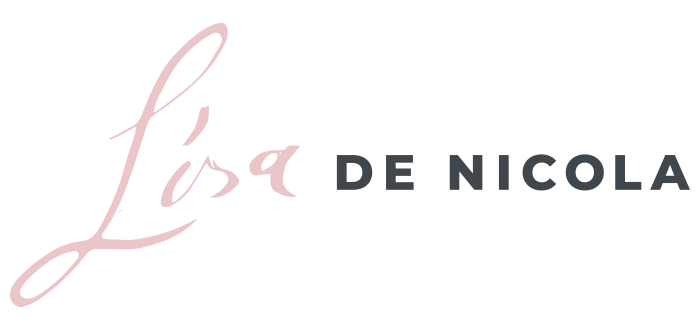When it comes to career advancement, what are some of the factors your female talent is considering? It might be the position and scope of the role, how much it pays, and the leaders they’ll be working with, yet ultimately, women want to know they’ll be set up for success.
We’ve heard a lot of talk about the importance of flexibility in the workplace and the like for working parents and everyone in between, yet this isn’t new information for women.
With the pandemic exposing issues women have long faced before the last three years presented, they’ve also faced challenges as they aspire to advance their careers, most of which their male counterparts have never encountered.
Women leaving the workforce in higher numbers than we’ve seen in years before 2020 wasn’t just because they were exhausted from doing two jobs – one at work and one at home. It was also a time to reconsider the places where they are valued and can grow.
In a climate where attracting the right talent for your business, let alone retaining them, has become increasingly challenging, getting your female talent to stay a while has become even more critical.
We want to work to close the gender leadership gap, not widen it.
Setting women up to succeed at the onset of their careers isn’t just about how you can invest in helping them do their jobs well; it’s about supporting them as whole individuals to help them grow and thrive.
Organizations have looked at investing in professional development very linearly for far too long. Yet, as we know it to be true, life is anything but linear, so why should we look at what helps us grow any differently?
We evolve and change as we grow, so what made sense and was appealing ten years ago may not fit the bill today. Personal preferences and needs have changed, priorities have shifted, and so has our world.
As an organization, one of the main factors to consider is understanding what responsibilities women may hold in their personal life that are important to them. And since everyone’s life looks different, be willing to challenge your assumptions that not all women are working parents yet may have other equally important priorities, such as caregivers for aging parents and require the time commitment to serve them.
Here are a few recommendations you can implement today:
Invest in their growth and development:
The obvious is worth mentioning since we don’t see it often enough. In a climate of economic volatility where corporations may be pulling back their spending, investing in women’s growth and development is an area you don’t want to cut. Professional coaching continues to be the most sought-after leadership and development tool and can help propel women forward. Whether private one-to-one coaching or in a group dynamic, both are worthy options to consider.
A group coaching experience would bring women together, learn from one another and benefit from the networking opportunities, which is a win-win.
More specifically, learn what skills are critical for their development to support them in advancing their careers and customizing training accordingly. Training on familiar topics, i.e. empathy or diversity, is not enough. Learn what areas your female talent is most interested in and required for their next level.
Networking and relationship building:
Relationships come in many forms; building them shouldn’t just be focused on internal efforts. Many professionals, not just women, get caught up in a linear way of thinking regarding networking. Identifying other professionals who are at the same level, in the same industry, and perhaps share a similar background. While there is learning here, you also limit the potential of expanding your relationships and learning new perspectives from those outside your space.
Organizations can support women in their networking efforts and building relationships in the following ways:
Internally: encourage and facilitate introductions with those in cross-functional departments with leaders are varying levels. Not only will this support employee engagement, yet it benefits all parties involved. Employees want to know colleagues and peers from other parts of the organization. Create opportunities to build relationships that are easily accessible to them. If this is not a viable option given the size of your organization, focus on the below suggestion.
Externally: offer a stipend to be used on joining professional associations. They are great options to support relationship-building and networking opportunities, as these associations will often draw professionals from varying backgrounds and offer the chance to learn from others. Encourage women in identifying associations that are different or complementary to your organization’s industry to support expanding these efforts.
Are your hiring efforts diverse?
To retain female talent, you also want to ensure you’re hiring the right talent AND that those hires are diverse. Research from McKinsey shows women of colour report fewer strong allies on their teams and less support from their managers for their career development.
Everyone wants to feel seen, heard and valued, yet women want to see representation in their workplace. Compared to 27% of white women, 41% of women of colour want to be top executives. This means you have a solid opportunity to ensure women are represented at all levels of your organization, especially across leadership.
Review your recruitment efforts and, if needed, look for opportunities for improvement to ensure diversity is a top priority in your hiring efforts.
Check yourself and your leadership team:
Before you look for all the external strategies and solutions, it begs the question: have you checked your leadership? The working environments you work in are created through a collective effort, yet as a leader, you have the most significant influence to set the tone and direction of the organization.
Patterns and habits are developed the more they are repeated. The ones that may be getting in your organization’s way and not serving you must be broken to create healthier ones.
Sustainable change begins with changing yourself first. Does your leadership style reflect the changes you want to make in your organization? Are you leading with the intention of what ALL your people need to succeed and thrive? When breaking down barriers and dismantling systemic obstacles, removing gender biases and discriminatory practices requires a thoughtful and honest approach to your leadership.
Not always easy, yet necessary if you’re serious about making the right changes to attract and retain women who want to work for your organization.
Attracting and retaining the right talent for your organization will be a continuous process you continue to refine as the market changes, as do the needs and desires of job seekers for every organization.
Above all else, create your working environments with intention and care where women and everyone who works for your organization want to be there. Give people a reason to stay and be so confident in your efforts by making the right investments to support women that they brag to all their friends and family about how much they love working for you.
Now, with all your efforts in attracting and retaining talent, which of the recommendations listed above stands out the most? Let me know in the comments below!
With so much love,
Lisa





